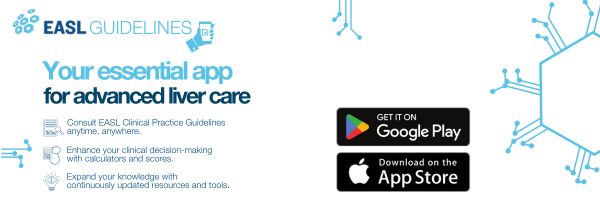New EASL Clinical Practice Guidelines on Hepatocellular Carcinoma

EASL has published updated Clinical Practice Guidelines for Hepatocellular Carcinoma (HCC), providing practical recommendations rooted in the latest evidence. These guidelines aim to assist healthcare professionals in managing this complex disease with a patient-centered and multidisciplinary approach. By addressing the evolving landscape of liver cancer care, they emphasise assessing individual risks and benefits to make informed treatment decisions while incorporating patient perspectives.
Key updates
The updated guidelines offer a comprehensive framework for managing HCC. They assess strategies for personalised surveillance based on individual risk factors and emphasise the importance of standardising imaging and diagnostic protocols to improve accuracy. Recommendations also address the expanded role of minimally invasive surgery, revised criteria for liver transplantation, and detailed guidance on transitioning between surgical, locoregional, and systemic treatments. Additionally, the guidelines incorporate new insights into radiation therapy, highlighting internal and external tools, and provide updated recommendations on combination immunotherapies, particularly for advanced stages of the disease. These elements reflect the complexity of liver cancer care and the need for adaptable and evidence-based solutions.
New developments in the field
Significant developments have shaped the field of HCC management since the previous guidelines in 2018. Surveillance has shifted towards more tailored approaches, utilising advanced imaging techniques to detect liver cancer at earlier stages. Diagnostics have benefited from standardisation through systems like LI-RADS while increasingly recognising the value of tumor biopsies in certain scenarios. Advances in surgical techniques now allow for minimally invasive procedures and effective downstaging strategies, broadening the options for curative interventions. Radiation therapy, once supplementary, has emerged as a viable alternative for selected patients, complementing established methods. Perhaps most transformative are the advancements in systemic therapies, where combination approaches such as immune checkpoint inhibitors given as doublets or paired with VEGF inhibitors have significantly improved outcomes for patients in advanced stages.
Guidelines that tailor care to each patient
The guidelines are designed to support clinicians in tailoring care to the unique needs of each patient. They offer evidence-based frameworks for diagnosis, staging, and treatment while emphasising the importance of clinical judgment. Recognising disparities in resource availability, the guidelines encourage adaptation to local conditions to ensure core quality standards are maintained globally. By providing clear, actionable advice, these guidelines aim to bridge gaps in care and improve outcomes for patients, particularly in regions where access to specialists may be limited.
Read the new EASL Clinical Practice Guidelines on HCC
The development of these guidelines reflects a collaborative effort among international experts, including clinicians from different specialties, researchers, and patient advocates. This multidisciplinary approach ensures the recommendations are applicable to diverse healthcare settings and address a broad range of clinical scenarios.
To further enhance accessibility, the CPGs will soon be available on the EASL Guideline app, enabling clinicians to quickly retrieve recommendations during consultations or tumour board discussions. The app’s intuitive design allows for efficient navigation, making it an invaluable tool for time-sensitive decision-making.


